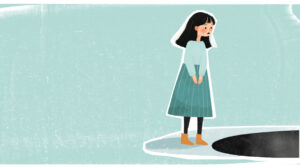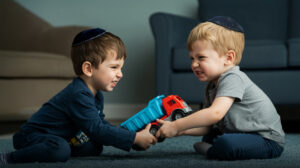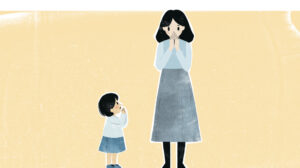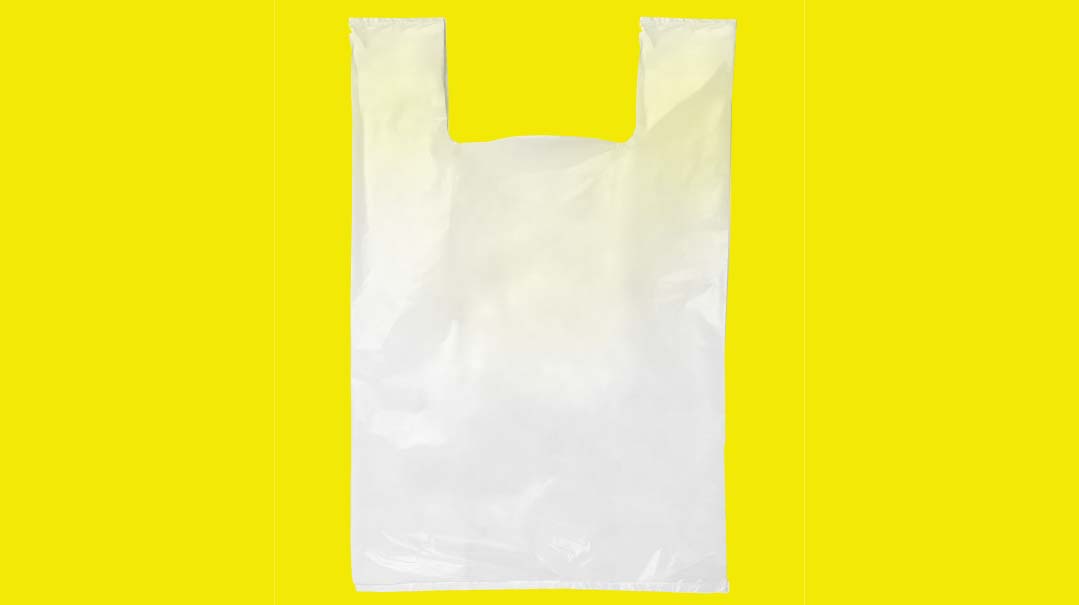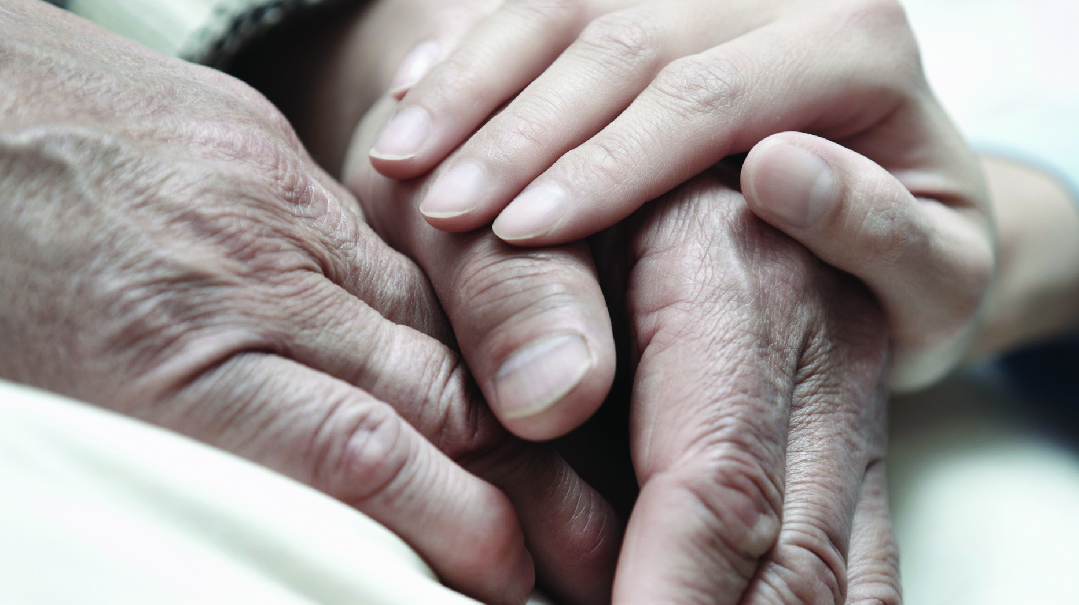Tug of War

“Maybe you can be Rabi Akiva,” I told Kalman one day, “but I can’t be Rabi Akiva’s wife”
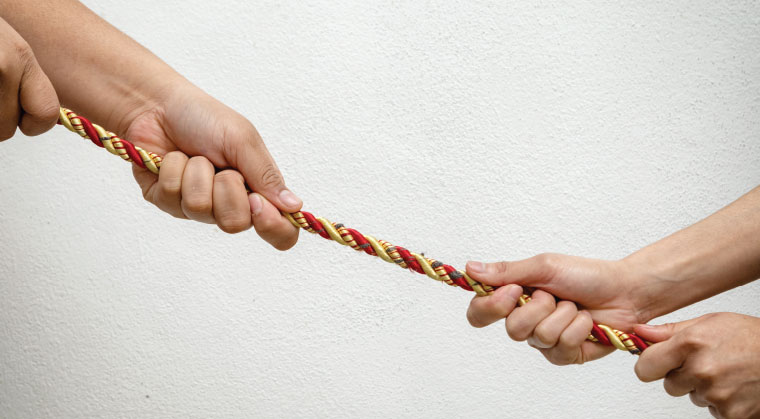
W
hen the name Kalman Brigel was suggested as a shidduch for me, nine years ago, I wasn’t in a rush to pursue it. My parents heard that he was an intense masmid — the type, they said, who wouldn’t even come home to eat supper with his wife. “He doesn’t eat, he doesn’t sleep,” his chavrusas told my parents. “All he does is learn.”
Other shidduchim were suggested, but somehow, the name Kalman Brigel kept coming up. Eventually, I decided to seek guidance from an adam gadol. “It’s easy for me to say, as a single girl, that I’m ready to marry someone who learns Torah day and night and support him in every way,” I reflected. “But what if, as a married woman, I realize that I’m not able to handle that kind of life?”
The gadol took my question very seriously. After some contemplation, he said he thought I could go ahead.
I went home and told my father that I was ready. Shortly afterwards, I was engaged. When we got married, he was 20; I was 21.
My shanah rishonah was not very different from my life as a single girl. After finishing my job — I worked in special ed — I went over to my parents’ house, which was just a few blocks away from my own apartment. I stayed there until about 9 p.m., when I returned to my apartment, did the little housework that was necessary, and then waited for Kalman. He was supposed to come home at 9:30 or 10 p.m., but most nights he actually returned from kollel around midnight, sometimes later.
By the time he came home, I was usually famished, so at one point, I started eating supper earlier and then serving him his supper whenever he arrived. Apparently, he didn’t like eating alone, because after that happened a few times, he started coming home on schedule, at 9:30, after which he would hurry out again to learn, coming home well after I was asleep.
On the day of my birthday, that first year, I made an extra nice supper. At 9:30 that night, he called and asked, “What do you say, Zissi? Should I stay to learn, or come home?”
“The best birthday present for me is if you stay to learn,” I replied. So he came home at 1 a.m., by which time I had lost interest in the supper I had made.
For the first two years of our marriage, we spent practically every Shabbos with my parents or Kalman’s, so even on Shabbos, we didn’t have any time together. I didn’t feel that I was missing anything, though, because my family was right nearby, and I had my mother and siblings for company. My role vis-à-vis my husband was mostly technical: doing his laundry, preparing his food, tending to his needs. He, in return, was very appreciative, complimenting me on the food I cooked and thanking me for all that I did to enable him to learn.
At age 21, a year after we got married, Kalman received semichah — a remarkable achievement for such a young person.
Two years after our wedding, we moved to a different neighborhood, which made it impossible for me to spend my afternoons and evenings in my parents’ house. But Kalman was still learning in the same kollel, and now that he was far away from our home, I saw him even less than before. Now that I couldn’t drop in at my parents’ house at will, I started feeling lonely and sensing that something was missing in my life.
When Kalman finally came home in the evening, he would sit down with a sefer or Torah journal, and when I tried to talk to him, his answers would be along the lines of “mm-hmm” or “oh, that’s nice.” When he was home, he was always somewhat tense, as though he couldn’t wait to leave again for the beis medrash. I never felt that he was really present with me.
When I was in advanced pregnancy, I would knock on a neighbor’s door to ask her to help me lift the chairs so that I could mop the floor. It didn’t occur to me to ask Kalman for help; I didn’t want to waste his time. The only thing he did around the house was prepare the Shabbos candles on Friday afternoon.
After I gave birth, when I needed more serious help, my younger sister would frequently come over to give me a hand, and my older sisters would send their daughters as well. As our family grew, I always had a sister or niece who was happy to pitch in and help me. Kalman continued to learn undisturbed, unfettered by the burden of the household and the children.
In order to keep control over our finances and avoid falling into debt, we didn’t use credit cards or checks. That meant that whenever we needed money, I had to run over to the bank or to an ATM to withdraw cash. Kalman never stepped foot into the bank, nor did he touch an ATM. Often, he would ask me for money, and I would tell him, “I’m so sorry, I knew we were low on cash, but I couldn’t make it to the ATM this week.”
Part of me wanted to tell him, “Why don’t you go yourself, for a change?” But I knew that he was spending every minute outside the house learning, and I didn’t want to be responsible for bittul Torah, so I restrained myself from insinuating that he should go to the bank himself.
I gave birth to my third child, a preemie, when I was 26. After the stress of that birth, I decided to take a course in art therapy, which was something I had always been interested in and something that I thought would help me advance professionally. As part of the course, which was held under the auspices of a frum program, the participants had to cut out pictures from magazines and paste them onto a paper. My collage contained pictures of an ear, a treehouse, a chair, the words of Eishes Chayil, helium balloons, a picture of Rabi Shimon bar Yochai’s tomb in Meron, a bouquet of flowers, a frame with the word “Why?” inside, and a row of babies alongside the words, “Mommy said the most important thing is family.” In addition, I had pasted on the phrases, “Lo baShamayim hi,” and “Da mah shetashiv,” as well as, “Save our home!” and “A beautiful smile doesn’t come cheap.”
When Shuli, the instructor, saw the collage on my paper, her eyebrows went up. “It looks like you have a serious conflict in your life, Zissi,” she said.
She asked me to step out of the room, and while I stood outside, she gave some instructions to the other women. Then she called me back inside.
“Hold out your arms,” she instructed me. She motioned to four women to stand on one side of me and tug at my right arm, and to another four women to stand on my other side and tug at my left arm.
The women on my right began calling out, “Torah! Olam Haba! Eternity!” and other phrases about the centrality of Torah. At the same time, the women on my left started calling out, “Life! Olam Hazeh! Pleasure!” and similar things.
The women pulled at me from both sides, while I myself made no effort to move in either direction. Tears began pouring from my eyes, as I consciously felt, for the first time, how conflicted I was between my desire for my husband to learn and my desire to enjoy my life and have a relationship with my husband. I myself hadn’t realized how deeply torn I was inside, but my art therapy instructor had seen it clearly in my simple cut-and-paste project.
It was a mighty tug of war, during which my watch and bracelet fell off. But eventually, the forces of Olam Hazeh prevailed, as the women on my left managed to drag me over to their side.
After that, life continued as before. The only difference was that now I was aware of my conflicted emotions, and aware that I wasn’t happy with my life.
“Maybe you can be Rabi Akiva,” I told Kalman one day, “but I can’t be Rabi Akiva’s wife.”
“Yes, you can,” he assured me. “I believe in you.”
His confidence in me only made me feel more conflicted.
I turned to an older friend for advice, and she, too, expressed her faith in my ability to be an eizer k’negdo and help my husband continue to grow in Torah. So I chided myself that I was fortunate to be married to such a special talmid chacham, and willed myself to ignore my growing discontent.
Sensing that I was unhappy, Kalman would ask me, at times, what he could do for me, or what I wanted him to change about himself. But I didn’t know what to answer him. I did want him to learn, after all, and that’s what he was doing.
At one point, I spoke to our rebbe about how torn I felt between wanting Kalman to learn and wanting to have him around. The Rebbe agreed that Kalman should spend more time with me and the family, and he gave clear guidelines as to what time Kalman should come home at night, how much time he should spend at home on Shabbos, and so on. Kalman abided by those guidelines at first, but as time went on, he slipped back into his old patterns of hardly being home.
Last winter, when I was expecting my sixth child, I began feeling pains in my feet. Shortly afterward, I noticed that I had sores on the skin of my feet. Thinking the sores were athlete’s foot, I bought some antifungal cream, but it didn’t help. I made an appointment with the doctor, who gave me a different cream. Not only didn’t that cream help, it actually burned my skin and made the sores much worse.
In the meantime, I developed a rash on the rest of my body, and open sores began to appear on my arms and hands as well. Never having experienced anything like this in my life, I had no idea what was going on. Neither did my doctor. At one point, my doctor sent me to the emergency room. A specialist there gave me a different cream, which brought me significant relief, and then I went home.
The relief was short-lived, however. After a few days, the sores reopened with a vengeance, causing me unbearable agony. My feet were cracked and full of pus and my hands were raw and bleeding. I couldn’t touch anyone or anything; lifting my children was out of the question. I couldn’t even wash my hands for netilas yadayim, let alone shower. I went on early maternity leave, and my nieces came over every day to help, cooking and cleaning for me and caring for the kids. People suggested all sorts of different ointments, and I tried all of them, visiting practically every pharmacy in town and spending a fortune in the process.
Several people recommended that I travel to Yam Hamelach for treatments. But when I contacted a dermatologist who works at the Dead Sea spas, he told me not to bother making the trip. “The treatments here can only help if you’re relaxed,” he explained. “And if you’re leaving a bunch of little kids at home, there’s no way you’re going to be relaxed.”
Desperate for a cure, I paid an office visit to the specialist who had treated me in the hospital, and he recommended that I be admitted to the hospital for several weeks and receive a treatment called phototherapy, which involved exposing my skin to special lights.
“I have five kids,” I said, “and it’s a month before Pesach. I can’t go to the hospital.”
He arranged for me to receive the phototherapy on an outpatient basis, coming to the hospital every day at 8 a.m. and staying until 2 p.m., and then returning home, with my feet newly bandaged and treated with special creams.
In the hospital, I underwent a biopsy that showed I was suffering from psoriasis, which was complicated by fungus and eczema. That explained why the antifungal creams had worked in the beginning and then made things worse: the creams had relieved the fungus but aggravated the eczema.
The phototherapy helped in the beginning, too, but after a while, I developed burns all over my body from prolonged exposure to the lights. My skin hurt so badly that I couldn’t even lie down. Even though it was winter, I walked around the house for months without socks, wearing plastic bags on my feet. There was no way I could make Pesach that year, so we went to my parents for the entire Yom Tov. I couldn’t even peel a potato.
A week after Pesach, the hospital stopped the phototherapy. “There’s nothing more we can do for you,” they told me. They closed my file and sent me home.
A friend of mine urged me to go for counseling. “Physical problems are often related to emotional issues,” she told me. “I know a therapist who’s very good with this sort of thing.”
But when I told Kalman I was interested in seeing a therapist, he was vehemently opposed. “Therapy can do more harm than good,” he cautioned me. So I let the matter drop.
With my due date approaching, I was terrified that I wouldn’t be able to hold or even touch my baby. My husband called our Rebbe to discuss the psoriasis, and the Rebbe’s answer was, “After the birth it will go away.”
This blessing proved prophetic. I gave birth on a Wednesday, in the summer, and that Shabbos, my sister-in-law came over to say mazel tov. “Are you the same person, Zissi?” she asked me, marveling at how smooth my hands were.
“The Rebbe said the rash would go away after the birth,” I said simply. And indeed, the skin of my arms and body healed practically overnight, so I was able to hold my baby.
My feet continued to hurt, however, and although the skin healed somewhat after the birth, the psoriasis persisted, and I was still walking around the house with bags instead of socks.
Shortly after the birth, I went to see a nutritionist who advised me to go on a special diet and cut out wheat, sugar, chocolate, and acidic foods such as oranges and tomatoes. I myself had noticed a link between what I ate and the severity of the psoriasis, and even before seeing the nutritionist I had cut out rice, corn, and potatoes from my diet, since I noticed that those foods triggered an immediate flare-up. It was difficult to restrict my food intake further — cutting out chocolate was somewhat of a trauma for me — but I followed the nutritionist’s recommendations nonetheless.
My new diet did bring some relief, along with the added benefit of helping me lose weight. Yet although the psoriasis improved, several weeks after starting my new diet I developed a severe skin infection in my leg. I couldn’t move my leg at all, and the pain was so excruciating that I just lay in bed and cried. I went to two dermatologists, but neither one knew how to treat the infection. Thinking that perhaps the infection was being triggered by a digestive issue, the second dermatologist referred me to a gastroenterologist, who ruled out that possibility. Instead, he prescribed an oral cortisone medication.
I was afraid to take cortisone, especially since I was nursing. But Kalman insisted that I had no choice but to take it.
It was a few days before Yom Kippur, and taking the cortisone would mean I couldn’t fast. “I’m not taking this medication,” I said flatly.
Kalman was desperate. “You know what?” he said. “If you take the cortisone, you can go for therapy.”
I took the cortisone, and the infection healed.
Now that I had the green light from Kalman, I made myself an appointment with the therapist my friend had recommended, a woman by the name of Nitza.
Later, Nitza would tell me what I looked like when I first walked into her office. “You were hunched over, as though the whole world was resting on your back. Your whole bearing screamed that you were collapsing, that you couldn’t cope with your life, that your body was breaking from the burden you were carrying.”
During that first session, I told Nitza about the tug-of-war exercise I had been through in my art therapy course, in which I was pulled in the opposing directions of Torah and Olam Hazeh.
Nitza was enthralled by the exercise. “You know, Zissi,” she remarked, “the Torah is a Toras chayim — a Torah of life. There really isn’t a conflict between devoting your life to Torah and enjoying your life. Torah is compared to honey, and it’s meant to be sweet. If you’re feeling bitter and burdened, you’re not living a Torah life.”
The psoriasis, she said, was a blessing in disguise. “You should thank Hashem for giving you psoriasis,” she told me, “because without it, who knows where you would be in ten years? You were plodding down a path of bitterness, so your feet decided to run away and rebel.”
Nitza worked with me on adopting a freer posture and gave me specific exercises that trained me to move my body in a less constrained and robotic way — to dance through life instead of being crushed by it. She also taught me to breathe deeply, open my shoulders, and bring Hashem into myself and my life. “Not everything is your responsibility,” she told me. “Let Hashem carry your burden.”
Letting Hashem carry my burden meant that I didn’t have to stretch myself to the breaking point. One day, Kalman asked me for money, and I told him we were out. “Here,” I said, handing him the bank card. “Can you pick up some cash at the ATM?”
Wonder of wonders, he did.
For the first time in our married life, I started asking Kalman for help — and not feeling guilty for disturbing his learning. To my surprise, he actually seemed happy to be helping. He was a kind, sensitive person who wanted to help — he just needed me to want his help. It was almost as though he’d been waiting all the years for me to ask him for help, instead of turning to my sisters and nieces. As long as I was held back by the fear of bittul Torah, I wasn’t ready to receive from him, so he couldn’t give to me. But now that I understood that Torah is life, I realized that I didn’t have to sacrifice or martyr myself for the sake of Kalman’s learning. I could have Olam Hazeh and Olam Haba.
Kalman, of his own accord, began to call me every evening to ask if I needed help. Sometimes, I would tell him, “Yes, the baby gave me a hard day, I would appreciate if you could come home and put him to sleep.” Sometimes, I would tell him, “It’s fine, the kids are settled, you can continue learning.” And sometimes, I would tell him, “I miss you, please come home so that we can talk.”
I would never have said anything like that in the past. Instead of expressing my needs and desires, I had projected the image of the long-suffering martyr, wanting my husband to learn while at the same time wanting him to be home with me. Kalman had neatly sidestepped the war zone by escaping to the beis medrash. Only when I resolved my own internal conflict, by making place for myself to enjoy a true Torah life, did he find place for himself at home as well.
“You’re so much more relaxed,” Kalman marveled.
“And so are you,” I replied.
Clearly, my newfound inner tranquility had impacted him as well.
What surprised me most was how happy Kalman was when he came home. Instead of making a beeline for a sefer, he started sitting down with me, asking about my day, and schmoozing with me. He no longer seemed tense or anxious to run back to the beis medrash at the first opportunity.
I, for my part, allowed myself to relax and enjoy his company, banishing all thoughts of, “Oh, no! I’m wasting his time! It’s bittul Torah!”
“I’m not learning less because I’m spending more time with you and the kids,” Kalman told me one day recently. “I’m learning better.”
In the meantime, my feet continued to heal, and I was able to wean myself off the cortisone pills and manage the psoriasis with ointments. The psoriasis still persisted on my feet, but it was under control, and no longer interfered significantly with my functioning.
Another interesting shift that happened in my life at around the same time was that I suddenly wanted to daven. Instead of feeling that I had to daven, I found myself pining to connect with Hashem. Instead of rushing through davening with my head in a million places and feeling guilty that I had no kavanah, I found myself saying the words slowly and calmly and relishing the opportunity to detach from all my other obligations.
Nitza wasn’t surprised. “When people feel free and unshackled, that’s when they have bechirah,” she said. “And then, they have the capacity to choose to be in a relationship, whether it’s with another person or, l’havdil, with Hashem.”
After seven sessions, when I asked Nitza to book our next appointment, she told me not to bother. “You’re done,” she said.
I was shocked. “But I’ve only been seeing you for a couple of months!” I protested.
“So what?” she said, shrugging. “You made the necessary switch in your life, and you don’t need my help anymore. You and your husband are good people, you just had to step out of the tug of war and start enjoying your life instead of suffering through it. You’ve done that. Now you can go teach what you’ve learned to others.”
(Originally featured in Mishpacha, Issue 693)
Oops! We could not locate your form.

